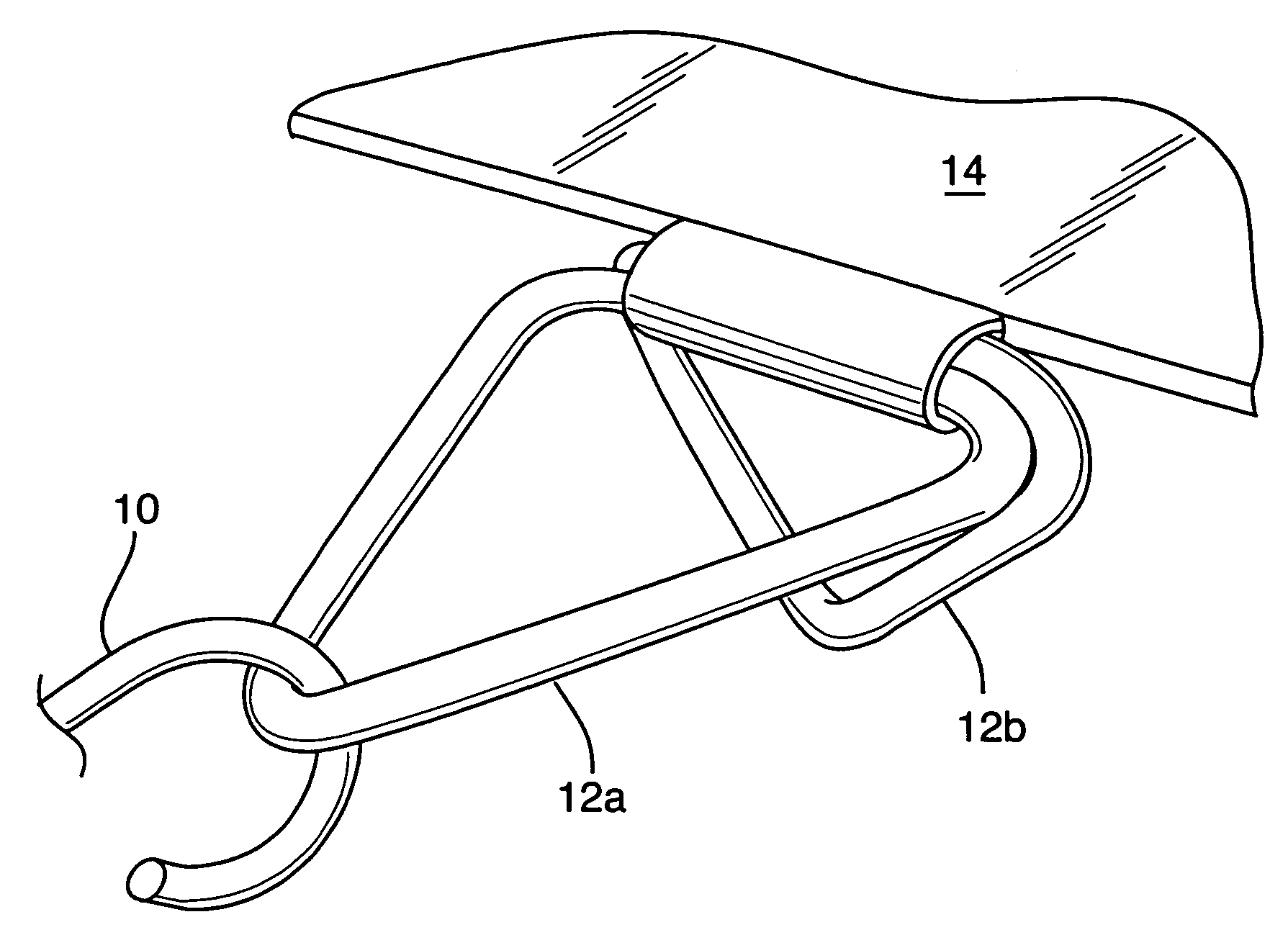Trampoline system with systematically phased spring elements
a spring element and trampoline technology, applied in trampolines, gymnastic exercise, sport apparatus, etc., can solve the problems of large number of injuries suffered during an impact with the rebounding surface, devices that do not directly address injuries, and injuries that are still occurring on the floor, so as to reduce the quantity and severity of on-bed injuries.
- Summary
- Abstract
- Description
- Claims
- Application Information
AI Technical Summary
Benefits of technology
Problems solved by technology
Method used
Image
Examples
Embodiment Construction
[0010] A system that embodies a new use for adjustable or extendable springs is provided. Completely counter to using adjustable or extendable springs to equalize the tension between all the springs as conceived by the prior systems, the present system uses adjustable springs to systematically vary the tension between the springs. For example, removing most of the tension on every other spring (half of the total number of springs) while they are at rest makes the bed safer by changing its rebounding dynamics.
[0011] All things being equal, varying the spring tension this way is more effective than the prior art at preventing on-bed injuries that result from multiple jumpers and awkward landings. For instance, many injuries occur when multiple users are jumping asynchronously, a first jumper deflects the bed and loads springs with the energy from his fall and now a second jumper lands on the bed in an awkward position. At this point in time, the bed is highly tensioned (unforgiving) ...
PUM
 Login to View More
Login to View More Abstract
Description
Claims
Application Information
 Login to View More
Login to View More - R&D
- Intellectual Property
- Life Sciences
- Materials
- Tech Scout
- Unparalleled Data Quality
- Higher Quality Content
- 60% Fewer Hallucinations
Browse by: Latest US Patents, China's latest patents, Technical Efficacy Thesaurus, Application Domain, Technology Topic, Popular Technical Reports.
© 2025 PatSnap. All rights reserved.Legal|Privacy policy|Modern Slavery Act Transparency Statement|Sitemap|About US| Contact US: help@patsnap.com


